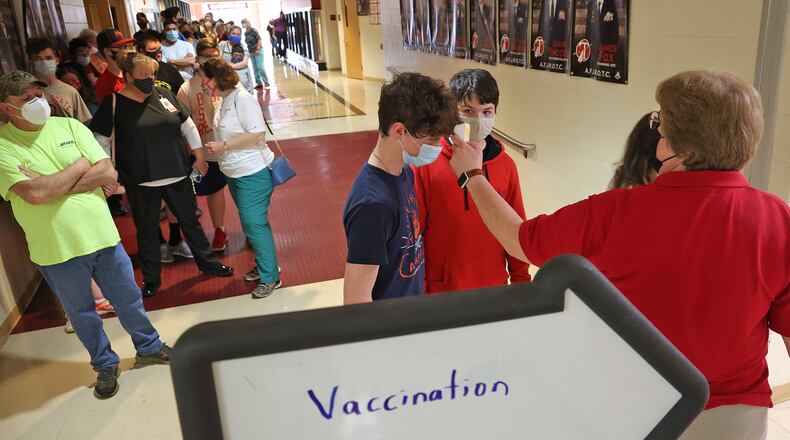To increase vaccination rates is Ohioans ages 12-17 the state is reaching out to school districts, boys and girls clubs, summer food programs and pediatrician offices about hosting vaccine clinics or getting doses to offer to patients.
About 200 school districts in the state plan to or have already held vaccine clinics, DeWine said.
He encouraged any primary care providers and pediatricians who want to be able to offer the vaccine to contact their local health department about getting shots.
Ohio is also increase the number of health care workers in underserved communities to help get vaccines in areas with lower vaccine rates.
With more contagious variants, such as the Delta variant, becoming more prominent in the U.S., health experts are concerned about surges in communities where less people are vaccinated.
“We really have a tale of two groups today,” DeWine said. “Their risks are really just fundamentally different. If there are enough unvaccinated people then the virus circulates much, much faster.”
To prevent outbreaks future outbreaks, more people need to be vaccinated.
“The age group where we can make the most movement is those who are 12-35 or 12-40,” the governor said. “That’s the most under-vaccinated group. So we now that’s the group we have to look at, that’s the group we have to talk to.”
Though cases and hospitalizations have declined throughout June, DeWine said about 100 Ohioans are dying each week from COVID.
“We mourn every death,” he said. “That’s still a hundred of our citizens dying every week.”
During the winter surge more than half the state’s deaths were in people ages 80 and older. Because older Ohioans have a higher vaccination rate, the state is now seeing deaths shifting to younger age groups, the governor said. Currently, about 65% of Ohio deaths are ages 40-79.
About the Author
